The Great Exhibition of 1851 - engravings
On 1 May 1851 the Great Exhibition of the Works of Industry of all Nations was opened by Queen Victoria in the Crystal Palace, Hyde Park. The idea for a public exhibition, with the aim of encouraging international dialogue and promoting British products, had gained ground in the late 1840s and a Royal Commission was established in 1850 presided over by Prince Albert, the Queen’s husband. Monies were raised and a competition to design a building established. Following the rejection of hundreds of submissions, a design by Joseph Paxton, inspired by the conservatory at Chatsworth where he was head gardener, was approved. The design was realised by engineers Sir William Cubitt and Sir Charles Fox.
The glass building comprised 4,000 tons of iron and 400 tons of glass. It was filled with over 100,000 objects, half of which came from Britain and the empire and the other half from the rest of the world. The exhibits were arranged by theme and by place of origin.
By the time the Great Exhibition closed on 15 October 1851, it had been visited by six million people and the decision was made to take down the Crystal Palace and re-erect it on land near Sydenham in south London.
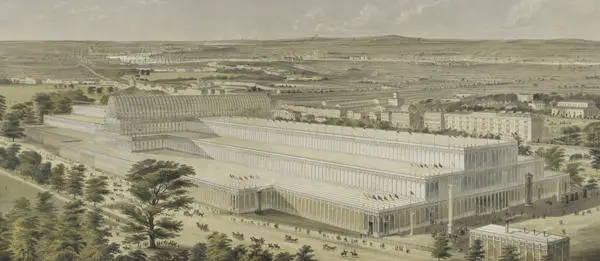
Representations of the Great Exhibition
With so many visitors the Great Exhibition was an opportunity to produce images recording the exterior of the building and the exhibits. Souvenirs in many forms, including prints, ephemera and photographs, were produced to suit all budgets. LMA has many engravings of the exhibition, in colour and black and white. Some were contemporary while others were produced after the spectacular was over.
As the exhibition was drawing to a close, advertisements for the Recollections of the Great Exhibition of 1851, engraved by Day & Son, of 17 Gate Street, Lincoln’s Inn Fields and published by Lloyd Brothers & Co, of 22 Ludgate Hill, and Simpkin, Marshall & Co. of Stationers’ Court, began to appear in the press. The work was a set of 25 lithographs available as a volume half bound in morocco at £3 3s 0d or in a portfolio, mounted and coloured, at a price of £8 8s 0d. The engravings were taken from original drawings made on site by several artists including John Absolon, C T Dolby, Henry C Pidegeon and W Goodall.
LMA holds a portfolio of these lithographs (SC/PZ/WE/02/1464-1488) including a general view of the interior by the artists Telbin and Absolon which gives an idea of the scale of the building, shows the first floor galleries and also one of the trees around which the structure was built.
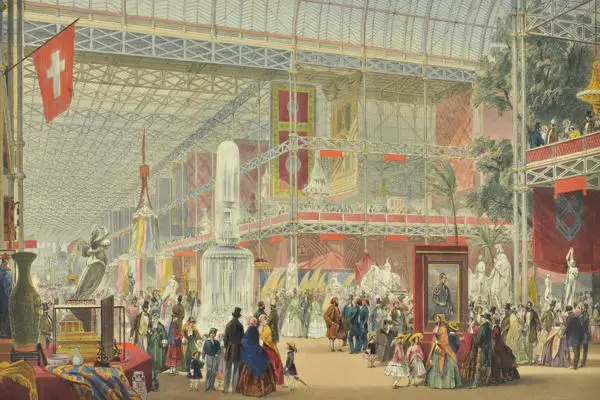
Other images include views of the stands or courts of a number of countries, India, China and France, and also the stands of individual businesses. One such stand was De la Rue’s which displayed and demonstrated its envelope folding machine. De la Rue, cardmakers and wholesale stationers, had been established for 30 years and were based at 109-113 Bunhill Row in London.
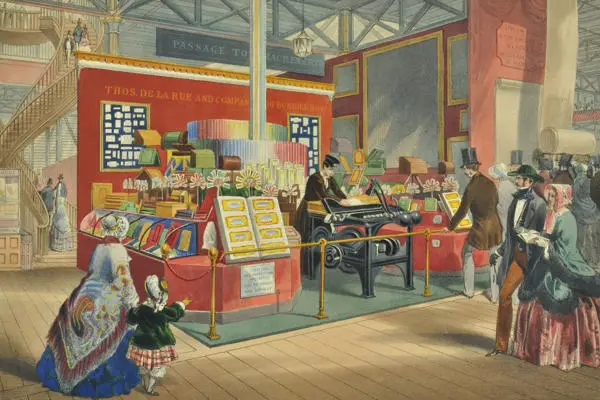
Information for another publication appeared on 29 November 1851 in the Examiner announcing the forthcoming Dickinson’s Comprehensive Pictures of the Great Exhibition which would comprise 50 coloured images. The price was announced as 16 guineas and the publication was to be produced in 16 parts, 21 shillings per part. Also for sale would be proofs with the artist’s signature at 31 shillings and 6 pence per part.
The images to be produced were based upon watercolours commissioned by Queen Victoria and Prince Albert with the purpose of being reproduced as chromolithographs and widely distributed. Further images were added to the original 50 to bring the total to 55. Many of the original watercolours by Joseph Nash and Louis Haghe can be viewed on the Royal Collections Trust website along with other watercolours of the exhibition commissioned by the royal couple for their private collection.
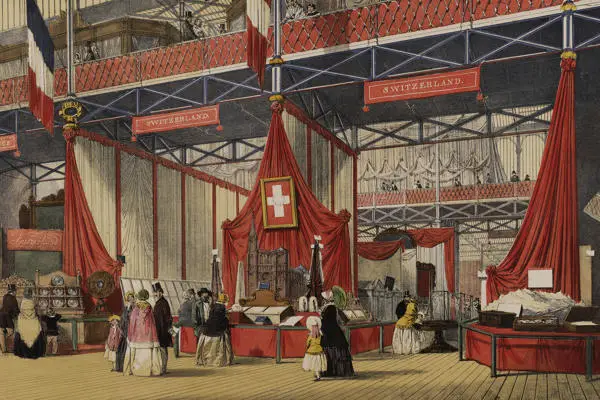
LMA’s holds different copies of this group of images. We have a set of the images [SC/PZ/WE/02/1489-1543] and second copies of 32 of them [SC/PZ/WE/02/1642-1773]. These are a combination of published chromolithographs, proofs with the artist’s signature, proofs (unsigned) and proofs before lettering (that is before the title had been added). Dickinson’s Comprehensive Pictures was also published as a two volume set, with the accompanying text, in 1854.
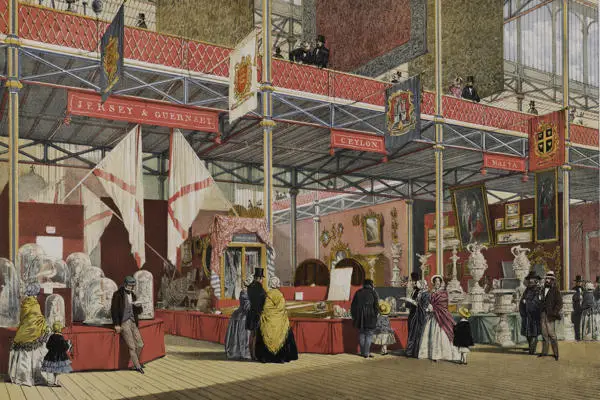
The subjects were similar to those in Day’s publication, but the colour is more intense. Dickinson Brothers were known for their use of the chromolithograph process, a method of creating coloured lithographs by using multiple stones to add the colours.
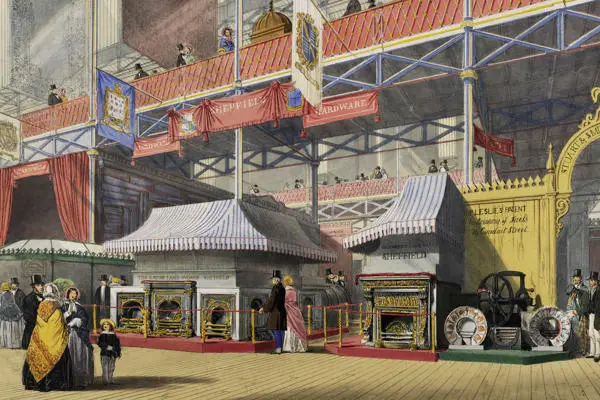
Images on the London Picture Archive
The images in Day & Son and Dickinson Brothers publications can be found on the London Picture Archive, LMA’s online image database, along with other images of the Great Exhibition including those produced by other publishers, for example Ackermann & Co and Read and Company.